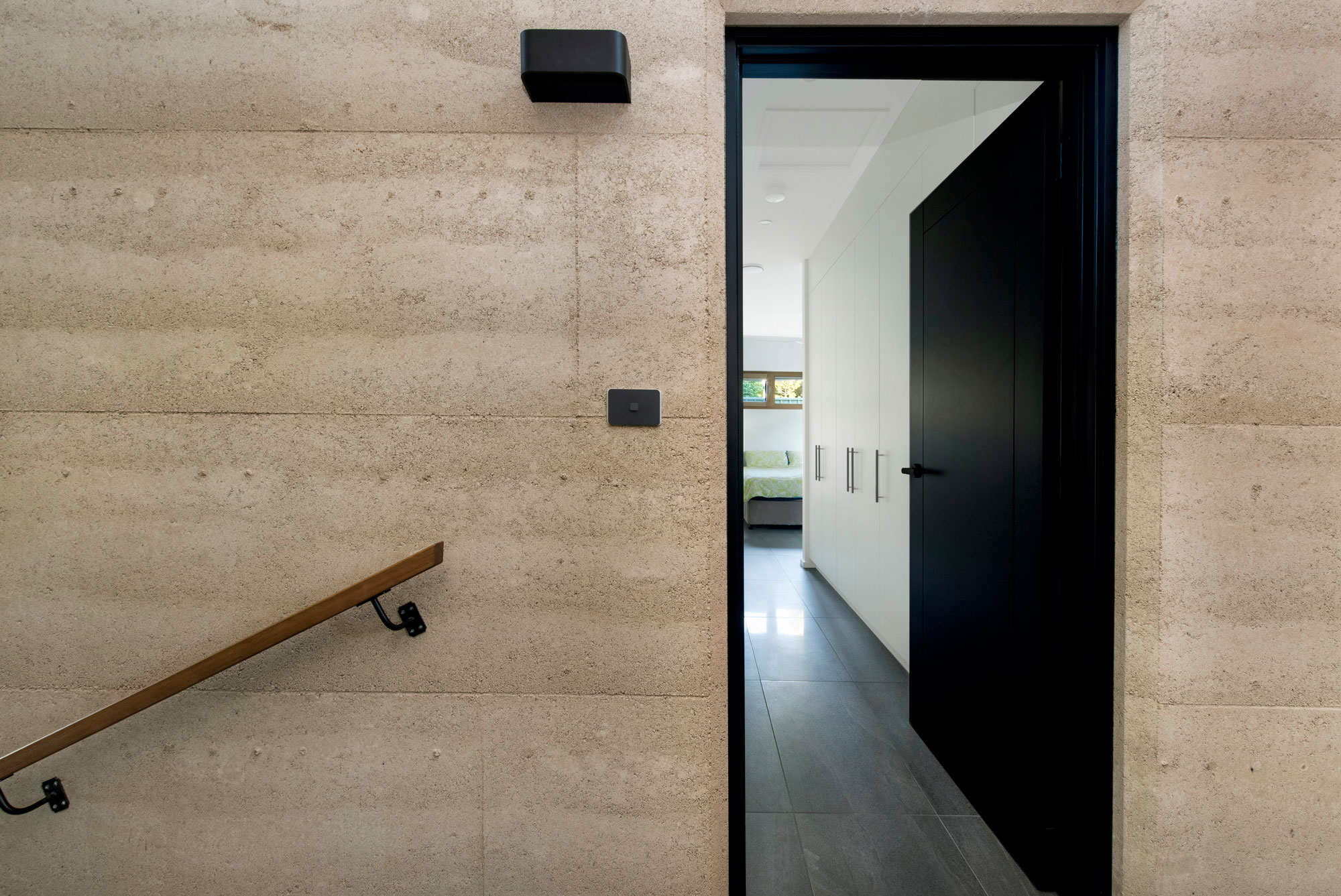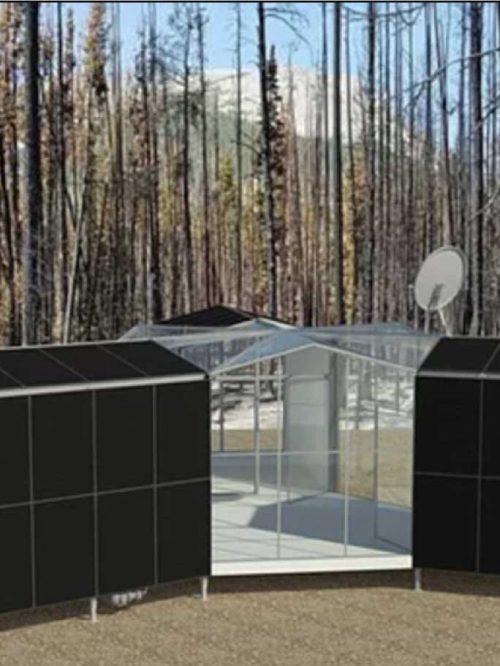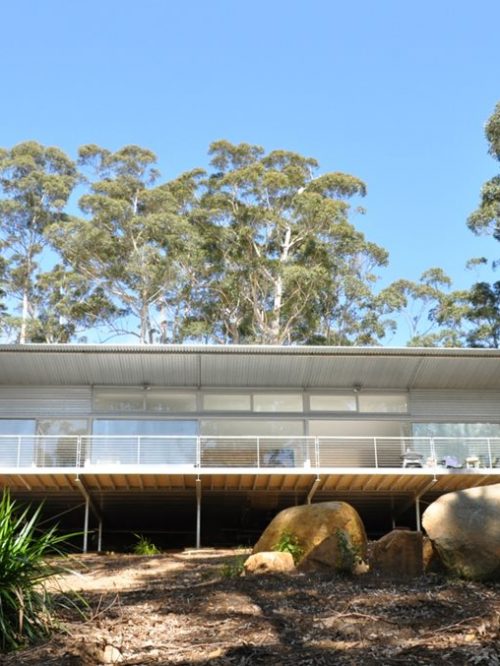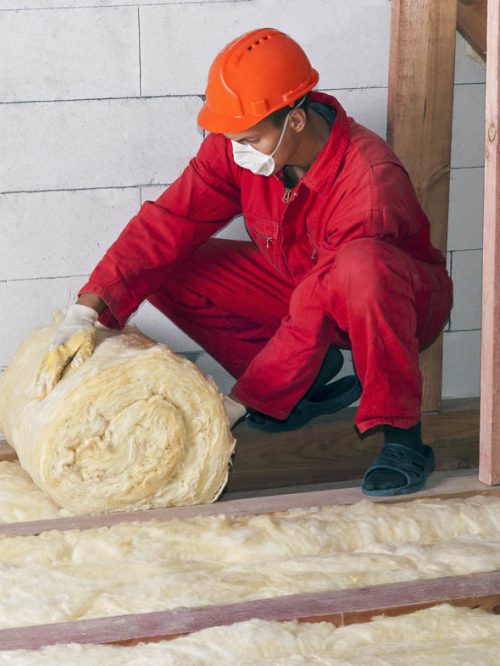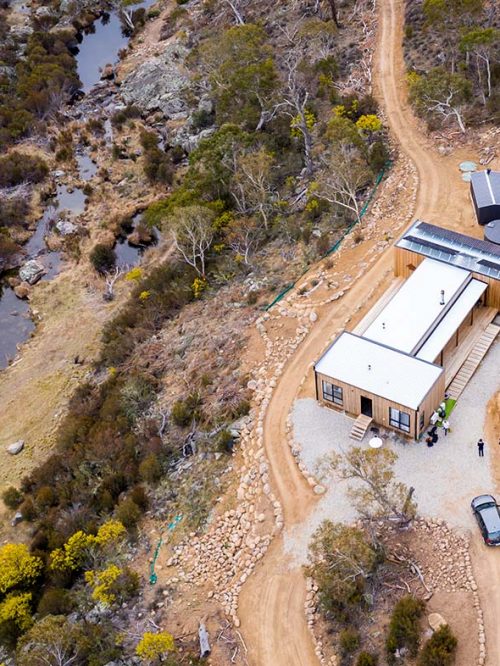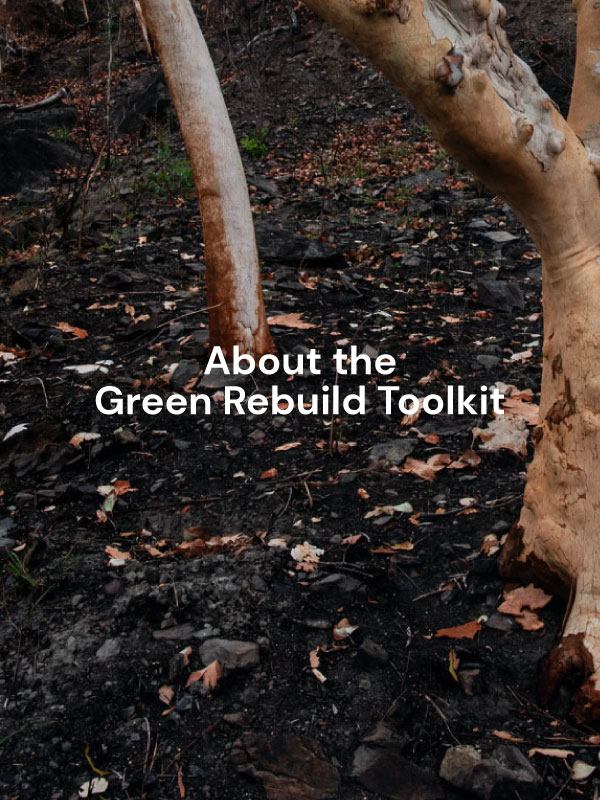The types of materials selected at the design stage of building a home will impact fundamentally on its longer-term sustainability. These choices have implications for saving energy, improving bushfire resilience and improving comfort.
Building materials typically considered to be ‘green’ include renewable plant materials like straw and mud brick, timber from forests certified to be sustainably managed, recycled materials and other products that are non-toxic, reusable and renewable. Check the suitability of materials with your designer when building to meet bushfire resistance and Bushfire Attack Levels.
Mudbrick
Mudbricks are pretty much what they sound like – bricks made of mud. Often, they are made on site from local soil, providing there is enough clay content. The soil is mixed with water and reinforcing materials such as straw and even cement and then pressed into wooden forms and allowed to set. The forms are removed and the bricks set aside to dry for up to several weeks. As they are made from natural materials they are a sustainable, recyclable, non-toxic and healthy form of building construction.
Mud brick has fire resistance properties similar to that of rammed earth and has very good sound insulation. It is pest resistant and strong, although needs protection from extreme weather and natural disasters such as earthquakes. Mud brick is not a good insulator as it is extremely dense and lacks the ability to trap air within structure.
Straw bale
Straw bale building, like mudbrick, is a sustainable choice as it is made from a natural non-toxic material. Rectangular strawbales are stacked up to form walls, fixed in place with metal or wooden pins, and then trimmed and shaped before being rendered with mud or cement-based renders.
Straw bale has many benefits including high insulation levels around R6 to R9; 10 times the insulation of a double-cavity brick wall, thus reducing the need for heating or air conditioning. Straw bale also converts a waste material to a valuable building resource, as straw might otherwise be burnt, producing greenhouse gases.
Although loose straw could catch fire easily, a packed straw wall is highly fire-resistant. A properly constructed and rendered straw bale structure has a minimum two-hour fire rating; some walls have passed up to four hours. Why does it not burn easily? The straw bales are packed so tightly that oxygen needed for combustion can’t enter. Further, the outside layer carbonises to form a layer of charcoal, which is a good thermal insulator.
Other properties include good sounds insulation and pest resistance, as there’s little nutrition for bugs in straw.
Prefabricated straw bale panels are another construction method to explore, particularly to speed up the construction time.
The Blackheath Strawbale House was owner-built by Miranda Corkin. Learn more about the house at the Sustainable House
Day website.
Hempcrete
Hemp masonry is thermally efficient, controlling heat flowing through the walls and providing good levels of insulation; it’s also breathable, controlling internal humidity, and non-flammable so it can be used in bushfire zones. A hemp building is also long-lasting – provided the detailing and construction quality is good, and if maintenance is carried out, as in any building type, it will last hundreds of years.
Hemp building products come in a few different ways including Hempcrete, a mixture of hemp hurd and specially formulated lime-based binder. There are many advantages to building with hemp and it’s hard not to get excited about its potential as an affordable bushfire resistant and thermally efficient building material.
Timbercrete
Timbercrete is a blend of cellulose, cement, sand and binders to enhance block strength and stop excessive water penetration. Its main ingredient is recycled timber and has a range of brick types including mud bricks, sandstone and cobblestone.
This results in a material that is lighter than solid concrete, but of greater strength and with better insulating capabilities. Some Timbercrete products can produce walls with R ratings of 3.7, which is higher than most other materials except strawbale.
Benefits include the use of recycled timber waste (cellulose), so no trees are cut down to make Timbercrete. Timbercrete also greatly reduces carbon footprint by locking up carbon in its structure. Timbercrete has been tested to AS1530 for fire rating, is very durable, has good sound insulation and is pest/termite resistant.
Rammed Earth
Not to be confused with mud brick, rammed earth is a precisely controlled mixture of gravel, clay, sand, cement, and sometimes lime or waterproofing additives. The contents are carefully proportioned and mixed, and then machine-compacted in removable formwork to yield a stone-like wall that is massive, water resistant, load bearing and long lasting.
The sustainable properties of rammed earth include having a relatively low impact on the environment, depending on the content and degree of local material sourcing. Rammed earth also has low embodied energy and greenhouse gas emissions, especially traditional rammed earth walls, which derive soil from on-site.
Rammed earth walls can carry up to a four-hour fire rating, i.e. it’s resistant to fire for up to four hours. This is because there are generally no flammable components in rammed earth. The fire rating will depend on the quality of the construction and the composition of the mixture used, as well as wall thickness.
Rammed earth is resistant to pests and vermin because nothing in the material attracts them. It also has high thermal mass and very good sound insulation.
Waramanga Rammed Earth House is built around a spine of rammed earth which is not only beautiful, but also provides thermal mass to stabilise inside temperatures at between 20-22 degrees through both summer and winter. Learn more about the house at the Sustainable House Day website.
Recycled concrete
If using concrete select a product made with recycled materials and aggregate. Recycled concrete’s embodied energy is significantly lower than conventional concrete, which emits considerable amounts of greenhouse gas during production.
Like normal concrete, recycled concrete is very fire resistant, although the fire rating will depend on the wall construction, mixture and thickness.
Concrete has very good thermal mass, is durable and can be load bearing.
Brick
Note that common clay house bricks as a building material have the advantage of high thermal mass, so they can be used to store or absorb heat to help provide temperature stability inside a home. However, to do this, they must be used in reverse brick veneer method, where they are used on the inside of a home, not on the outside.




